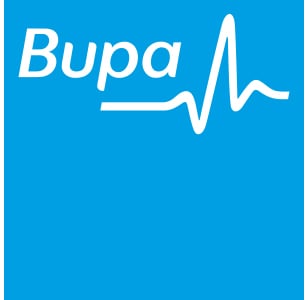When purchasing a health insurance policy, there are various options and choices to make; on the level of cover you require, the hospitals you would like to be included, as well as other options which can reduce your premiums - like excess. These options are great for making policies flexible and suited perfectly to you. If you're having trouble deciding what you need though, our expert advisers are on the end of the phone to talk you through it.
What is health insurance excess?
An excess is a way to reduce your private health insurance premiums, by volunteering to pay the first part of any claim, up to a fixed amount of money. A policy excess is the pre-determined initial amount you agree to pay towards a claim, before the insurance cover kicks in to pay the rest. So, for example if you had treatment worth £3000 and you had a £200 excess on the policy, you would pay £200 towards the treatment and your insurer would pay the £2800.
Some insurers stipulate a compulsory excess on their policies, others don’t. Most offer a voluntary excess option, either as the total excess, or an amount in addition to the compulsory excess.
The options therefore are:
- No excess
- Compulsory excess
- Voluntary excess
- Compulsory excess + Voluntary excess
An excess is most often required to be paid per person per year, meaning you would only pay an excess towards the first claim you make in a year, regardless of how many other claims you make that same year. Some other insurers however, do offer the option to pay the excess amount for each claim, which is another way to reduce your premium.
When comparing policies it is important to ready the terms and conditions of the policy carefully, to make sure you know which excess stipulations apply.
Why increase the excess?
The more you can increase the excess, the more you will be able to reduce your premiums. Obviously, in the event you were to make a claim, you would pay more at that point with a higher excess. It is important to make sure that the excess is an affordable amount for you, should you need to claim. However, as long as the amount is affordable, increasing the excess is a great way to significantly lower your monthly premiums, without compromising on cover. It still gives you the reassurance that big, expensive treatments would be covered.
What are the excess options?
Different insurers offer different excess options. Below are the top companies and their excess amount options:
Bupa – £0, £100, £150, £200, £250, £500
Aviva - £0, £100, £200, £500, £1,000, £3,000, £5,000
AXA - £0, £100, £250, £500, £1000, £2500, £5,000
The Exeter - £0, £100, £250, £500, £1,000, £3,000 and £5,000
Freedom - £0, £100, £250, £500, £1000
Vitality - £0, £100, £250, £500 or £1000
How much will it reduce my premiums by?
Adding an excess to your policy can reduce your premiums quite significantly. To use Freedom Health insurance as an example, the below are the excess options available as well as the corresponding premium reduction they offer.
£100 excess - 10% premium reduction
£250 excess - 15% premium reduction
£500 excess - 22.5% premium reduction
£1,000 excess - 35% premium reduction
When do you pay the excess?
When you need treatment and come to make a claim, you would usually contact your insurers to check the treatment you are looking to have is covered by your policy. If it is, you would usually pay the excess ahead of your appointment.
What is a shared responsibility option?
An extension to the idea of an excess is a shared responsibility or a co-payment on claims – where you agree to pay a percentage of every claim – for example 10% - and your insurer agrees to pay the remainder. This can reduce your premiums even further.
Are there other options to reduce premiums?
There are other ways to reduce premiums, but most will involve reducing the level of cover, or the hospitals available to you. Another option for those whose primary concern is avoiding long waiting lists is to opt for what’s known as a ‘six-week option’. This means that any condition you have which the NHS will treat within six weeks, you can go ahead and receive treatment on the NHS. If they are unable to offer treatment within this time-frame, you can rely on your health insurance policy to step up and cover treatment privately, so you don’t have to wait. Waiting times for non-emergency treatments on the NHS aims to be less than 18 weeks, but plenty wait much longer.
Related Posts
FAQs
-
Do I have to pay an excess should I need to claim?
This will depend on the whether you added an excess to your policy when setting it up. Excesses are used to reduce your premium – the higher excess option you select, the lower your monthly premiums will be. Talk to one of our expert advisors to ensure you have the best option to suit you.
-
Are there additional costs other than my monthly/annual premium?
There are options to add an excess onto your policy, this will help reduce your premium. If you choose this option, which most of our clients do, you will have to pay your chosen excess when you claim on your policy. If there are any shortfalls in your claims, you may be required to contribute.
-
Do you offer No Claims Discount?
Yes! Some of our insurers offer No Claims Discounts up to 80%.
-
Can I reduce my premium?
Yes – we can help you reduce your premium. By speaking to one of our advisors, we can review your cover and ensure you are not paying for anything that is not relevant to your needs. We can also reduce your premium by choosing a reduced or local hospital list, adding a “waiting period” to your plan or choosing a higher excess.
Get a quote!
Compare the best health and life insurance policies on the market by filling in the short form below.
Thank you, John
We will be in touch shortly to run through your free tailor-made quote from UK’s leading insurers. Our prices won’t be beaten with our best price guarantee.
At Usay we take your data security very seriously and we will not sell your data to third parties. By clicking search now you agree to allow us to contact you regarding your free, no obligation quotation by email or phone. Please see our Privacy Policy and general terms.











